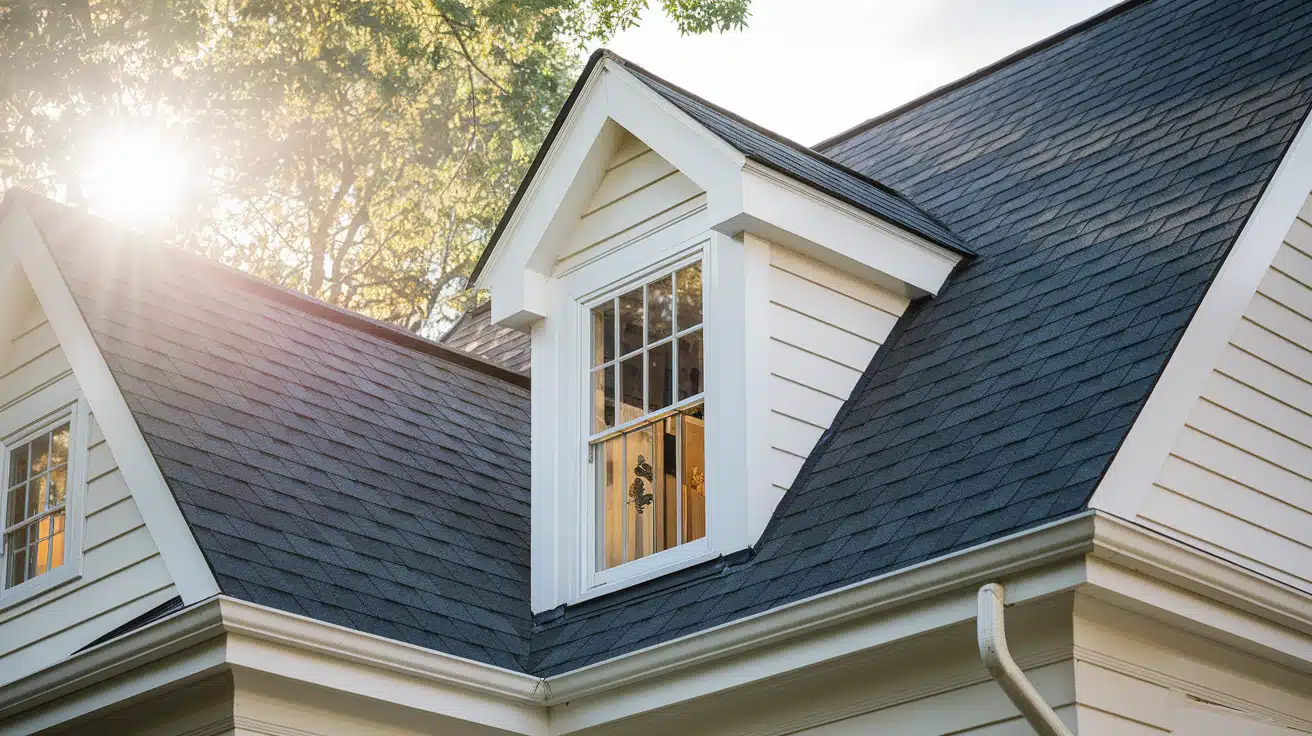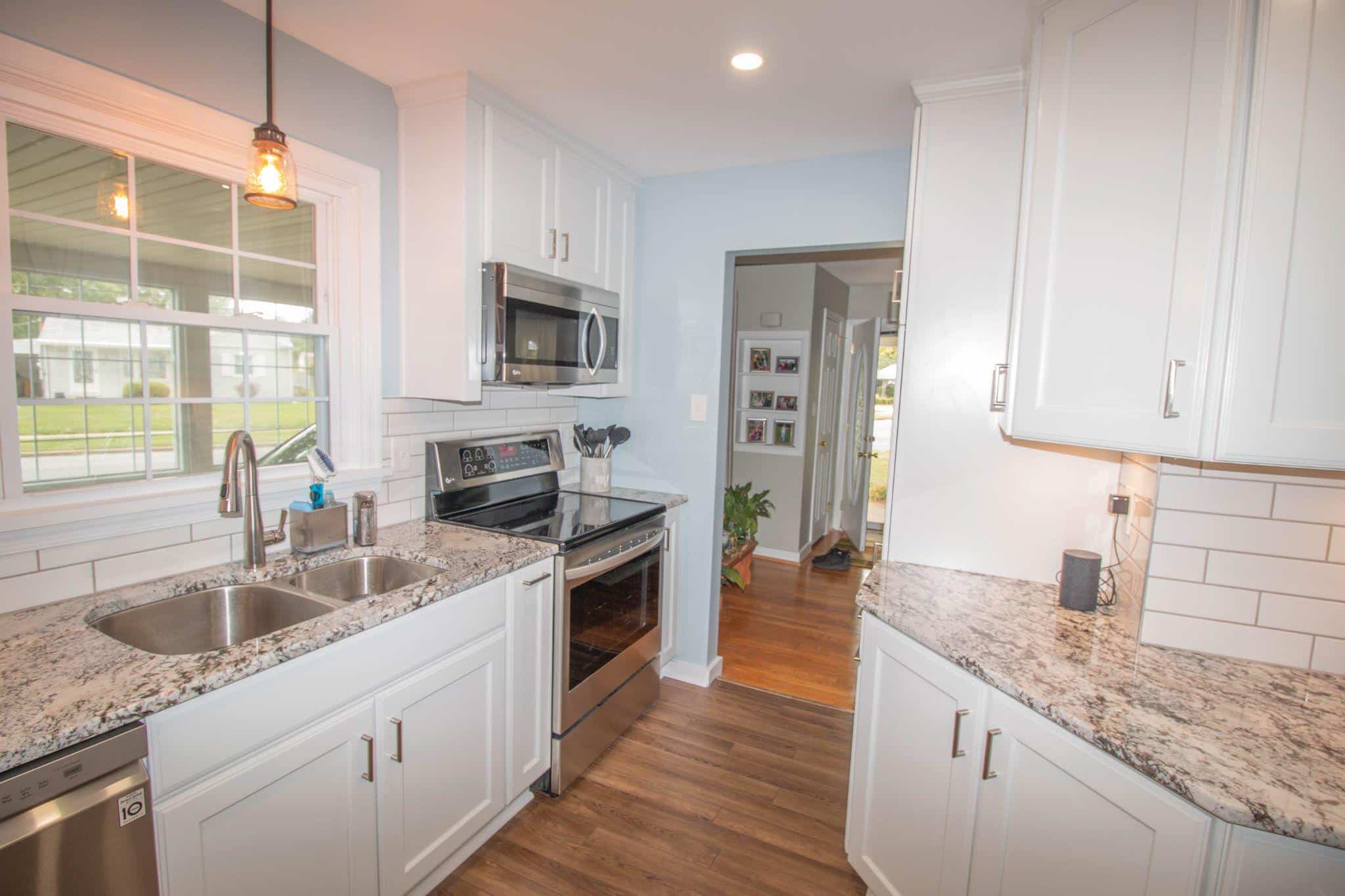Do you feel cramped in your attic? The low ceiling height probably makes you duck and dodge to move around.
You’re not alone. Many homeowners struggle with limited attic space, making it difficult to use that extra square footage.
You might even have a finished attic, but those sloping roofs mean you can only use a tiny portion of the floor area.
But what if you could transform that awkward space into something truly useful? A dormer addition could be your answer.
It’s a smart way to add headroom and bring natural light into your attic, turning that cramped space into a cozy room you’ll actually want to spend time in.
What Is a Dormer Addition?
A dormer addition is a roof extension that includes a window designed to increase space and bring in natural light.
It transforms attics and upper floors by adding headroom, making previously cramped areas more functional and comfortable.
Dormers are a popular architectural feature found in homes worldwide, seamlessly blending into both traditional and modern designs.
Beyond improving usability, they enhance ventilation, boost curb appeal, and often increase property value, making them a practical and stylish home improvement choice.
Why Consider a Dormer Addition?
1. Maximizing Usable Space- Do you have an attic with plenty of floor space but low ceilings? A dormer adds headroom right where you need it, making more of the space usable.
2. Adding Natural Light & Ventilation- Dormer windows brighten dark attic corners and improve airflow, creating a more comfortable and inviting space.
3. Boosting Home Aesthetics & Value—A well-designed dormer enhances curb appeal and can increase home value, often yielding a 40% return on investment.
4. Cost-Effective Alternative to Roof Raising- Instead of a costly full roof lift, a dormer expands space without major structural changes, saving time and money.
Types of Dormers & Their Benefits
Dormers are a great way to add space, natural light, and style to your home. The right type depends on your needs and house design. Let’s look at your options.
1. Gabled Dormers
Gabled dormers are one of the most recognizable and widely used dormer styles.
They feature a triangular-shaped roof that sits perpendicular to the main roof, giving them a traditional and timeless appearance.
They add headroom and bring in natural light while keeping a traditional look. You’ll find three main variations:
- Hipped dormers with sloped sides
- Bonneted dormers with curved tops
- Eyebrow dormers with rounded shapes
2. Shed Dormers
Shed dormers are designed to extend horizontally along a roof with a single, sloping plane.
This type of dormer is ideal for homeowners looking to maximize attic space without drastically altering the roofline.
More Space, More Light A shed dormer has a single-sloping roof and runs horizontally.
It’s like adding a mini floor to your attic, giving you more room to move around. You can choose from:
- Flat-roof dormers for a simple solution
- Nantucket dormers that blend gabled and shed styles
3. Other Dormer Styles
Recessed Dormers: A Subtle, Blended Look
- Built into the roof rather than extending outward, giving a more seamless and subtle appearance.
- It helps maintain the home’s original structure while adding functionality.
- Often used in modern or minimalist designs.
Extended Shed Dormers: Expanding the Attic’s Potential
- Larger than traditional shed dormers, running across the entire length of the roof.
- Offers maximum space expansion, making attics fully livable.
- Common in multi-room attic conversions or second-story additions.
False Dormers: Purely Decorative Charm
- Designed solely for visual appeal rather than functionality.
- Does not provide additional space or natural light but enhances curb appeal.
- Often used in colonial, Cape Cod, and traditional-style homes.
The right choice comes down to your needs: shed dormers for maximum space, gabled dormers for classic appeal, or false dormers for pure aesthetics.
Each option helps make your home more functional and appealing.
Structural & Design Considerations
Let’s discuss what really matters when planning your dormer addition—the details of making it work properly and look great.
First, you need to know your roof height and make sure everything’s sturdy enough.
The law says you need at least 6 feet 8 inches of ceiling height, but most experts suggest going for 7½ to 8 feet to make the space feel comfortable.
Choosing where to put your dormer is like solving a puzzle. You want it where it will bring in the most light and make the space the most useful.
Many people forget that the dormer must also look right from the street. Consider your home’s overall design and how the dormer will fit in.
Now, about keeping your energy bills in check. Smart planning, such as insulation in your dormer walls and picking the right windows, can make a big difference.
Think of it as putting a good coat on your dormer—it will keep the warmth in during winter and the heat out in summer.
Cost & Maintenance Factors
1. Estimated Costs
The cost of adding a dormer can range from $2,500 to $20,000 per dormer, depending on the style, size, and complexity of the design.
Simpler dormers, such as flat-roof or gabled dormers, tend to be more affordable, while larger sheds or custom dormers can increase costs.
2. Maintenance Needs
Dormers require regular roof inspections to ensure they remain in good condition.
Proper flashing and sealing are essential to prevent leaks, and gutter maintenance helps direct water away from the structure, protecting your home from potential water damage.
3. Return on Investment (ROI)
A well-designed dormer improves space and aesthetics and can also increase home value.
Homeowners typically see up to a 40% ROI, making it a smart and functional investment.
Potential Challenges & How to Overcome Them
1. Permits & Local Building Codes
Before you get too excited about your new dormer, check with your local building department. Here’s why:
- Each city has different rules about dormer size and placement
- You might need specific permits for both construction and design
- Some areas have height restrictions you’ll need to work within
Quick Tip: In Portland, for example, dormers under 12 feet don’t need extra lateral reinforcement, which is a detail that could save you money!
2. Weatherproofing & Water Damage
Water is your biggest enemy when it comes to dormers. Here’s what you need to know:
- The connection between your dormer and the main roof needs special attention
- Proper flashing installation is crucial around windows and joints
- Regular maintenance checks can catch small issues before they become big problems
Pro Tip: Consider having a roofer handle the dormer’s sidewalls, even if a general contractor builds the dormer itself. They’ll know exactly how to prevent leaks.
3. Structural Modifications
Your existing roof might need some help to support a new dormer:
- Floor joists may need strengthening to handle the extra weight
- Support beams might need reinforcement
- Roof framing could require adjustments
Remember: It’s better to spend a bit more on proper structural work now than deal with problems later.
Conclusion
A dormer addition can transform your attic from a cramped storage area into a living space you’ll love.
Whether you choose a classic gabled design for traditional charm or a shed dormer for maximum space, the key is careful planning.
Remember to check local building codes, work with experienced professionals, and pay special attention to weatherproofing.
While adding a dormer requires careful consideration of structural needs and proper installation, the results are worth the effort.
Think of a dormer as more than just a home improvement project. It’s an investment that brings natural light, fresh air, and usable space to your home.
When done right, it creates a comfortable new room while adding to your home’s overall appeal and value.












